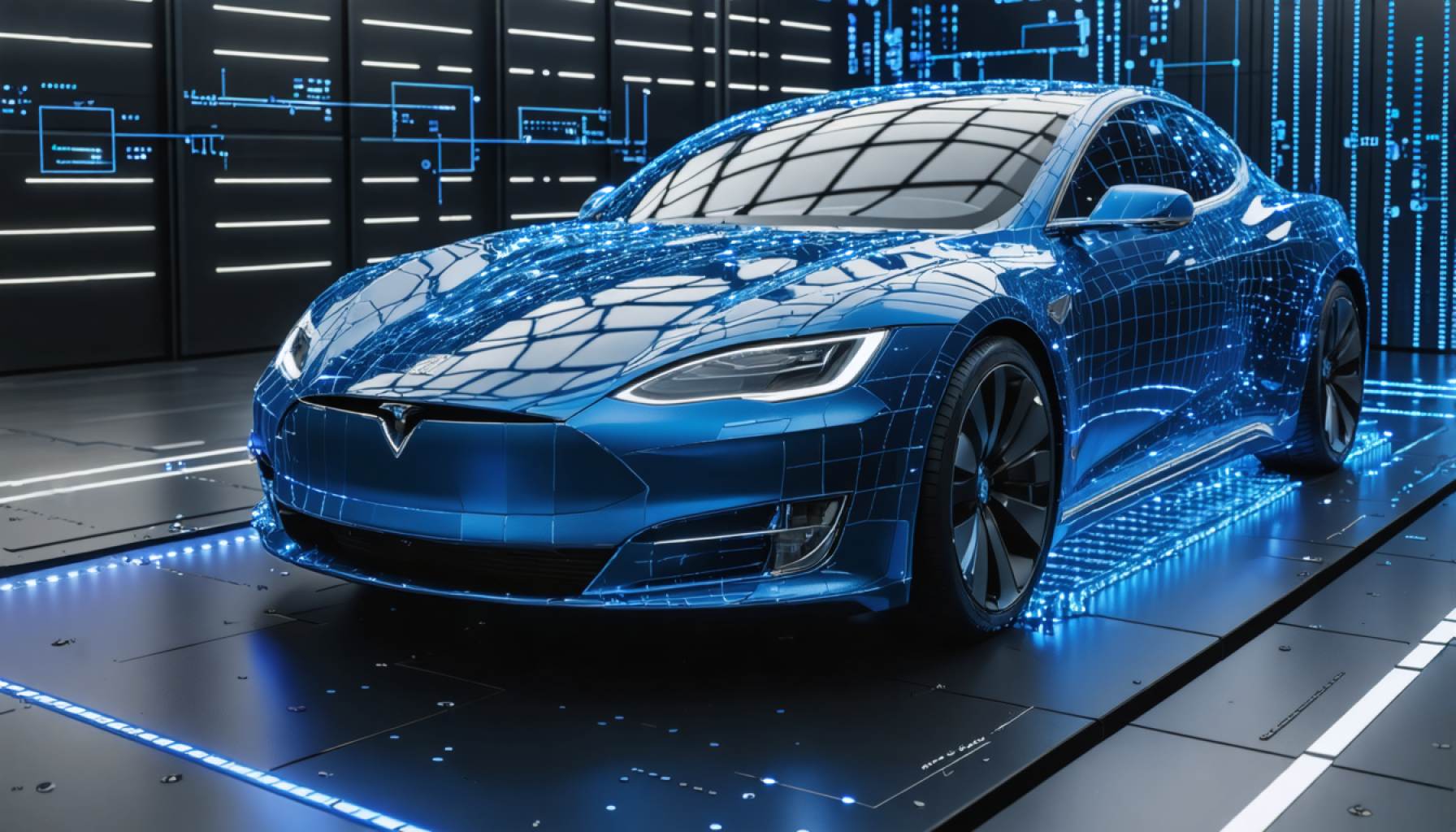- Solidion Technology’s graphene-hosted silicon anode process offers a potential 20-40% increase in EV battery range.
- The innovative use of porous graphene ball structures allows for up to 90% silicon content, enhancing anode capacity significantly.
- This approach bypasses traditional volatile and costly silane gas, utilizing a silane-free silicon precursor.
- Solidion’s method reduces production risks and costs, making EV batteries safer and more economical.
- The technology promises a transformative impact on sustainable transportation by enabling longer EV travel ranges.
- As EV adoption grows, Solidion’s breakthroughs signal a major advancement in battery design and performance.
A technological breakthrough is on the horizon, promising to transform the future of electric vehicles (EVs). Solidion Technology has pioneered a revolutionary process that reinvents the very core of EV battery design, spearheading a wave of advancements with their cutting-edge graphene-hosted silicon anode technology.
Imagine your electric car gliding further down the highway on a single charge—not by inches, but potentially by a staggering 20-40% more range. This leap in performance comes courtesy of Solidion’s ingenious integration of graphene with silicon. Traditionally, the industry wrestled with cumbersome and hazardous chemical processes; silane gas, the standard silicon donor, is both volatile and costly.
Solidion’s new approach, which they’ve secured with multiple U.S. patent applications, deftly sidesteps these obstacles. The secret? Porous graphene ball structures that are not just formidable but also accommodating—holding up to 90% silicon. This dramatically boosts anode capacity and redefines the boundaries of battery performance.
What makes Solidion’s creation a game-changer is its reliance on a silane-free silicon precursor. This innovation not only streamlines production but also significantly reduces associated risks and costs. Safe, efficient, and scalable, Solidion’s method is set to upend traditional EV battery setups.
The implications are profound: safer batteries, less expensive production, and cars that take you further than ever before. As EV adoption accelerates, innovations like Solidion’s promise not just a drive, but a dazzling leap into the future of sustainable transportation. Watch this space; the roads ahead are about to become a lot greener.
Revolutionary Breakthrough in EV Battery Technology: How Solidion’s Graphene-Silicon Fusion is Leading the Charge
Features, Specs & Pricing
Solidion’s Technological Edge: At the heart of Solidion’s breakthrough lies the incorporation of graphene-hosted silicon anodes. These anodes uniquely allow for up to 90% silicon content by volume. The primary benefits include a significant increase in energy density and an enhancement of battery life cycles.
Production Costs: By eliminating silane gas, Solidion’s methodology reduces material costs and minimizes manufacturing complexity. This cost efficiency could make premium EV models more affordable for consumers.
Market Pricing: While exact pricing is not yet available, industry experts suggest that reductions in production costs could translate to a 10-15% drop in retail prices of electric vehicles equipped with these advanced batteries.
Real-World Use Cases
Extended Range for EVs: Solidion’s technology is especially advantageous for long-distance travel. Customers will see increased driving intervals between charges, making EVs more appealing, particularly for rural or less densely populated areas.
Industrial and Commercial Vehicles: The increased energy capacity is also beneficial for electric trucks, buses, and delivery vans, providing reliable power for heavier vehicles and more demanding usage.
Life Hacks & How-To Steps
Maximizing Battery Life:
1. Understand Charging Cycles: Familiarize yourself with the manufacturer’s guidelines on charging practices to prolong battery life.
2. Temperature Management: Avoid exposing your vehicle to extreme temperatures. Solidion’s batteries perform optimally within a specific thermal range.
3. Regular Software Updates: Keep your vehicle’s software updated to ensure optimal battery management and performance.
Industry Trends & Market Forecasts
Growing Adoption: With the rise in fuel prices and increased environmental awareness, the electric vehicle market is expected to grow by 25% annually over the next decade. Solidion’s battery technology positions it favorably within this expanding market.
Strategic Partnerships: It is likely that major automotive manufacturers will form alliances with Solidion to gain a competitive edge, particularly in models focused on extended range and efficiency.
Reviews & Comparisons
Competitive Edge: Compared to traditional lithium-ion batteries, Solidion’s graphene-silicon anodes promise significant enhancements in safety, cost, and performance. Competitors in the market, such as lithium iron phosphate (LFP) batteries, may offer safety advantages but generally lack the energy density that Solidion’s technology provides.
Controversies & Limitations
Scalability Concerns: While Solidion’s approach is scalable, there may be initial bottlenecks in ramping up production to meet demand, particularly as demand surges.
Material Sourcing: The availability of high-quality graphene is crucial to ensure the consistency and reliability of the batteries produced.
Security & Sustainability
Improved Safety: By avoiding volatile materials, Solidion’s technology reduces the risk of battery fires, ensuring a safer experience for users.
Sustainability: The reduced need for toxic processing chemicals underscores a commitment to environmentally friendly production methodologies.
Actionable Recommendations
1. Stay Informed: Monitor automotive industry news for announcements on partners or new models featuring Solidion technology.
2. Evaluate Needs: Consider your driving habits and needs to determine if the benefits of extended range and improved safety align with your personal and financial priorities.
3. Plan for the Future: Preemptively address charging infrastructure in your area to accommodate the extended capabilities of future EVs.
For more on emerging EV technologies and sustainable transportation advancements, visit Tesla or Ford to explore current offerings and future innovations in the EV space.













